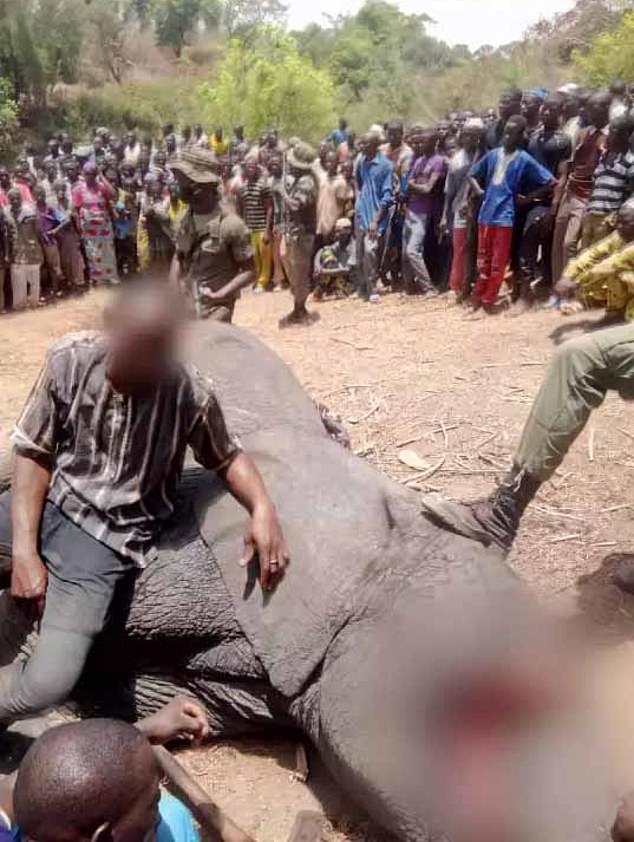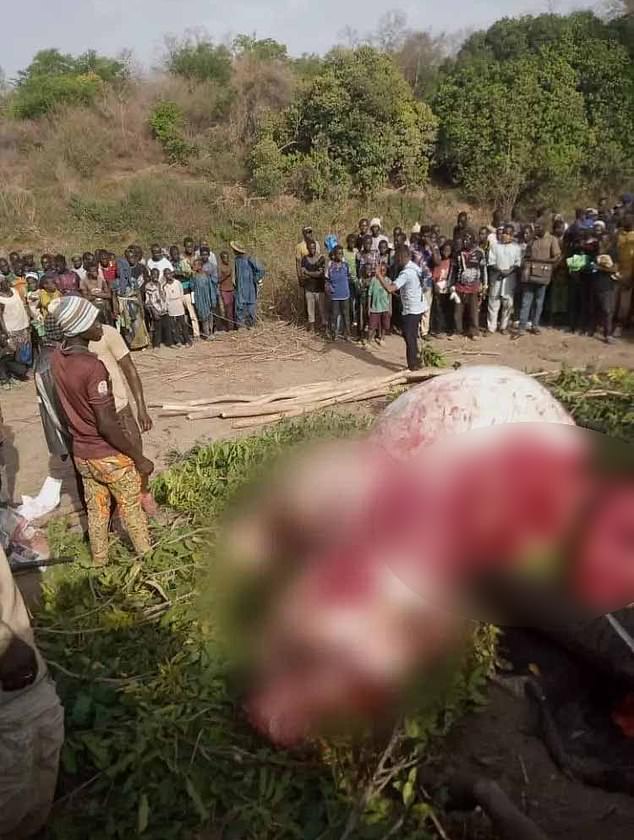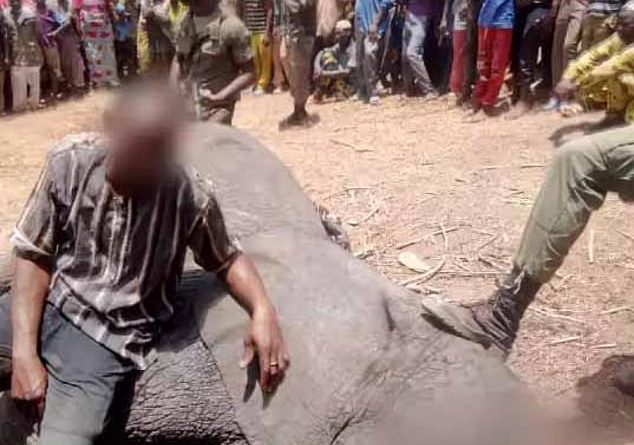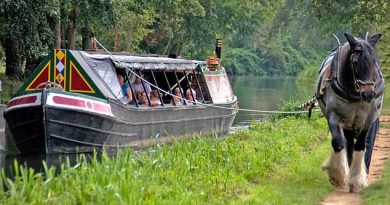Rampaging shot after killing three people in Benin
Rampaging elephant kills three and injures several others before being shot dead, skinned and hacked up by rangers who then distribute lumps of meat to villagers in Benin
- WARNING: Graphic images
- Rangers were forced to kill the wandering elephant which had come into villages
- The decision followed an unsuccessful attempt to remove it from the area
- After it was shot, the elephant’s carcass was cut up and distributed to locals
- Since appearing in mid-March, the elephant had killed three people near Kandi
Park rangers have shot dead a rampaging elephant which killed three people and injured several others in northwestern Benin.
A local organisation skinned the huge animal, before hacking up its meat to distribute to villagers in the town of Kandi.
Photos shared online showed crowds of onlookers watching the enormous carcass being divided in late April.
A statement signed by Christophe Lemee, the director of one of the area’s national parks, said that rangers killed ‘a marauding elephant’ in Kandi on April 27.
Northwest Benin is home to the Pendjari and W national parks – part of the WAP complex (W-Arly-Pendjari) that makes up West Africa’s largest stretch of protected land.

Park rangers have shot dead a rampaging elephant which killed three people and injured several others in northwestern Benin. A local organisation skinned the huge animal, before hacking up its meat to distribute to villagers in the town of Kandi
Most of the 6,000 elephants that live in the region call the parks home, though it is fairly common for them to roam close to nearby villages, France24 reported.
The statement from Lemee said that the elephant had been killed due to ‘the grand and persistent menace he posed to local populations,’ as well as ‘the difficulty of controlling it and returning it to its natural habitat as soon as possible.’
The elephant had been wandering close to villages since mid-March and killed a woman after charging at her in a forest.
He later injured several people in the Sam neighbourhood before going on to kill two more people in Sonsoro, another Kandi neighbourhood.
The animal was shot and killed by a team of forestry workers and rangers from African Parks, a South African NGO that runs the reserves, France24 reported.
Department of Water and Forests workers then skinned the elephant, cutting off its tail and tusks, before a local organisation distributed the several tons of meat to locals.
David Ayegnon, the forestry captian who led the operation, said that locals had asked rangers to kill the elephant when it killed the woman in March but they had refused, hoping it would return to its natural habitat.
He told France24’s Observers team that after the others were killed, the team began the process to remove the elephant but it had been unsuccessful.

Photos shared online showed crowds of onlookers watching the enormous carcass being divided in late April
‘We didn’t have the means to move it ourselves. It was in a gallery forest, which is really difficult to access. There are no landing strips for airplanes and there isn’t really any form of transportation that could be used to transport an elephant that could access the area.
‘We are protectors of the environment and we have no interest in killing animals. But we were forced to make this difficult decision in order to protect the locals. They could no longer go to the fields or go about their daily activities. The elephant had caused a lot of damage,’ Ayegnon told France24.
Despite the elephant’s violence towards humans, some social media users expressed sadness as its death.
‘Killing an animal that is outside of its natural habitat and that costs human life isn’t a solution for the increasing number of conflicts between animals and the local population,’ one wrote.



